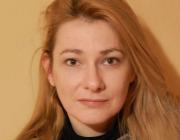Abstract:
Detailed quantitative analyses of calcareous nannofossils/coccolithophores performed on the deep sea deposits of the north eastern Mediterranean Sea; two gravity core from North Aegean Sea (SL 152) and south Cretan continental margin (HCMR 2/22), with a focus on the regional expression of sapropel S1 deposition. In both sites, higher values of
Florisphaera profunda,
Helicosphaera spp.,
Braarudosphaera bigelowii and the concomitant increase of stratification S index, within sapropel intervals can be interpreted as the result of elevated marine production and enhanced inflow of fresh water input during the S1 period. A series of cooling events detected within the S1 depositional interval, may be linked to outbursts of cold northerly air masses and relevant pulses in the deep-intermediate water ventilation that caused the temporary cessation of S1 deposition between 7.8-7.5 ka uncal. BP in North Aegean and 8.1-7.8 ka uncal. BP at the south Cretan margin. During this interval the peak of
Braarudosphaera bigelowii, the decrease in abundance of
Florisphaera profunda,
Helicosphaera spp.,
Rhabdosphaera spp. and a general increase in NPP are related to a shoaling of the nutricline and higher production in the surface layer.
Publisher's Version

